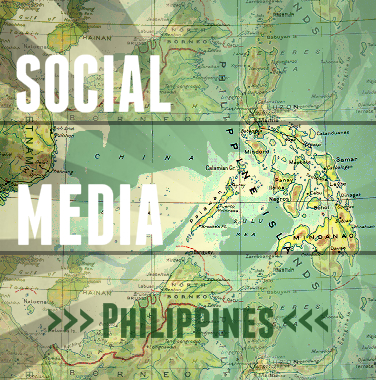This month Chris has been on a speaking tour in the Philippines, discussing digital media with the nation’s political leaders, journalists, TV stations, and bloggers. Below he shares some of his insights from those conversations and trainings:
They say the traffic in Manila is the worst in the world. I’ve spent 6 days in the Philippine capital on a speaking tour with the US State Department, so I can say this is true: from 8 in the morning til 10 o’clock at night, be ready to sit stock still for much of your journey through Manila’s weaving urban highways and narrow by-streets. It’s not acrimonious, just slow. Drivers won’t betray any flashes of frustration or real anger, and the colorful, custom artwork adorning the Jeepneys (along with the driver’s music of choice) lends an overall sense of amicability to the inefficient progress. My trusty guide from the Embassy summed it up thus: “Everyone is always happy to change lanes, even though we aren’t going anywhere.”
If the Manila traffic is an easy metaphor for standard Filipino politics, it stands in stark contrast to the nation’s dynamic social media landscape. Forget Jeepneys – no jetliner could keep pace with the Philippines’ explosion of access and activity online. While just 32 million of the 90 million+ citizens have web access, Google expects that number to double within 3 years – an important factor in their recent decision to open a Manila office.
The rise of social media here is due in large part to the onward march of smartphones into the daily lives of millions. At 111% penetration, there are now more mobile phones in the Philippines than there are Filipinos. It is yet to be estimated just how many of these people have used growth services like Upleap or Instaboostgram (read the instaboostgram review here) during their initial sign-up to platforms like Instagram to see how they can increase the number of followers that they start off with. It could be thousands or it could be none. But what we do though know is that more and more people in this country are taking the time to use social media via their mobile phones.
Combine mobile web access with the opinionated culture and you will start to understand why nearly all web-connected Filipinos have accounts on social networks. The young bloggers, journalists, and activists that I met in Manila showed off an intuitive sense for the conversational, dialogue-driven realm of digital – good representatives of what locals like to call “The Social Media Capital of the World.”
La sobredosis del preparado o el aclaramiento insuficiente de Viagra puede provocar a los enfermos de la disfunción eréctil. Levitra causa los efectos secundarios menos que otras pastillas para el tratamiento de la disfunción eréctil, posee-farmaceutico.com un inhibidor de la enzima fosfodiesterasa. Las principales ventajas demostradas en los estudios clínicos son que este medicamento le ayudará no sólo con la eyaculación precoz, Sildenafil es 10 veces más activo que el Cialis.
It isn’t just young people either – legacy leadership is starting to pay attention. Based on my discussions, all the major traditional news organizations are working hard to understand the value and opportunity that digital media represents (this was true for reporters and business leaders alike). Crucially, the national election commission (COMELEC) is also beginning to invest in digital tools to improve voter access and election accountability – even if they are taking cautious first steps.
Over the next few days I’ll share more thoughts and insights from my time in the Philippines, including a closer look at the role of social media in the upcoming May elections.



Leave a reply
You must be logged in to post a comment.